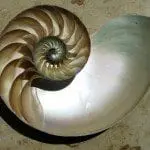by Frank Sherwin, M.A.
For decades it has been somewhat of a mystery to secularists as to why our solar system is structured the way it is: the four gas giants—Saturn and Jupiter, composed mainly of helium and hydrogen, and Uranus and Neptune—orbiting far away from the sun, and the four smaller rocky planets, the terrestrials—Mercury, Venus, Earth, and Mars—orbiting much closer to the sun.
Astronomers are puzzled that other recently discovered planetary systems look so different from ours. One evolutionist stated, “There are so many surprises in this field—almost nothing is turning out as we expected.”1 Indeed, for the secular astronomer, basic planet construction is caught on the horns of a dilemma.
The predicament is this: Planet formation must occur quickly before the protoplanet is pulled into the star it’s orbiting, but getting tiny bits of protoplanet dust to join up into nice, round spheres and thence into a proper planet has not been found to work. Many stars in our Milky Way possess spinning disks of matter—orbiting gas and dust—but there are three significant problems in forming planets from these ingredients: death spirals, accretion (the gradual growth of planets by the accumulation of debris), and turbulence.2 The building of planets large and small is an enigma, and “many aspects of the formation of the giant planets remain unresolved.”3 An evolutionist writing in the prestigious Nature journal stated …Continue reading.





